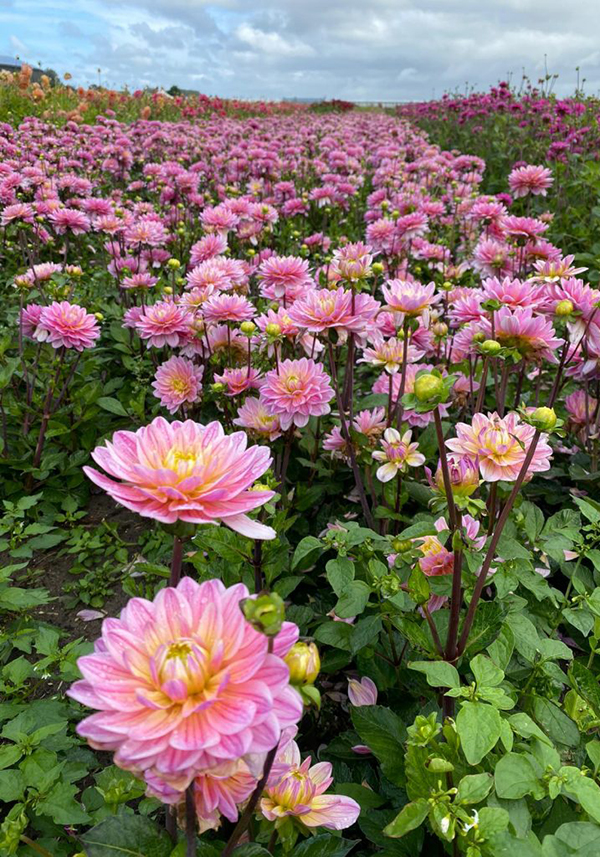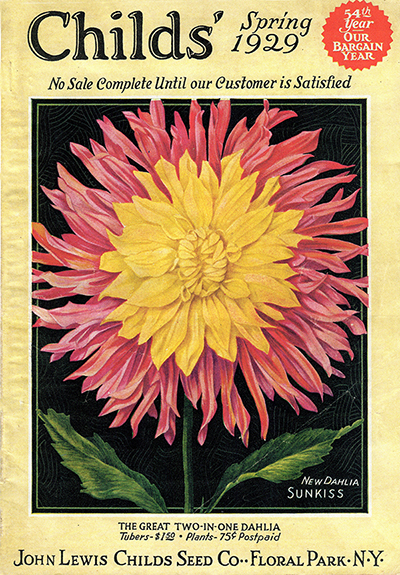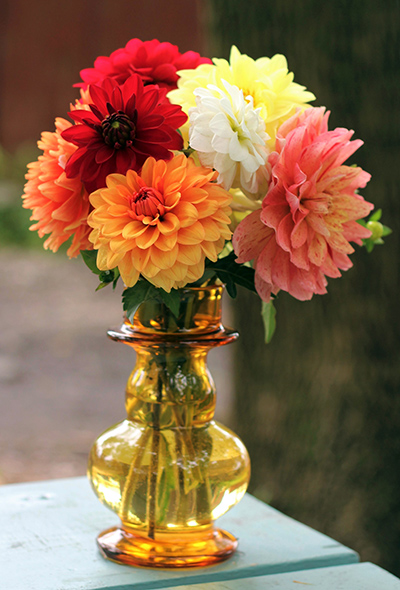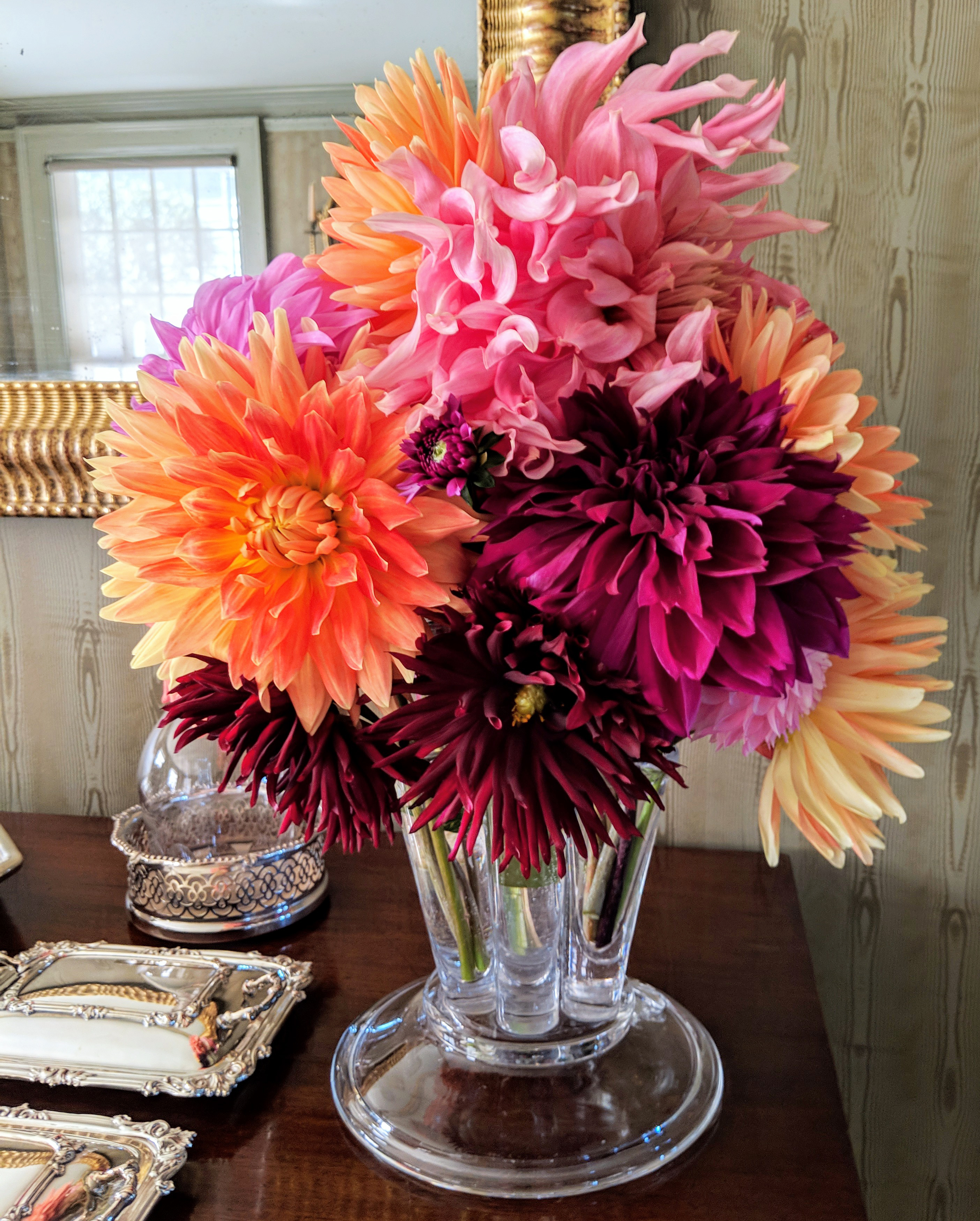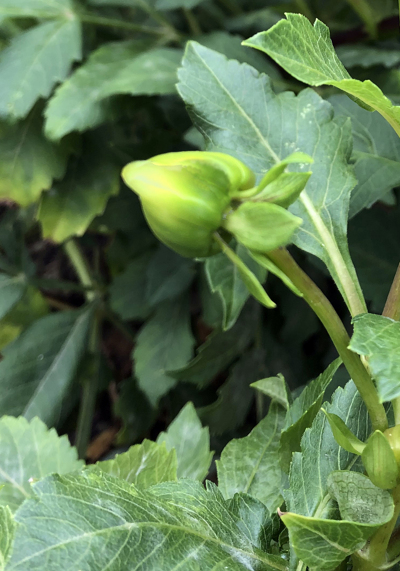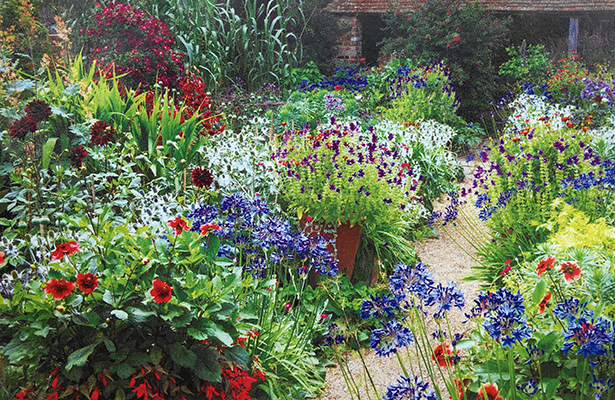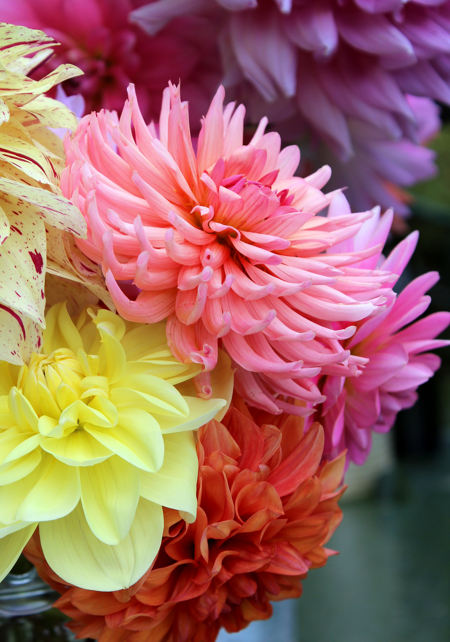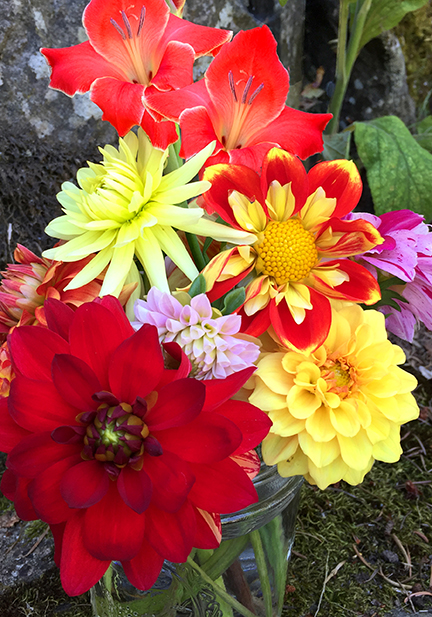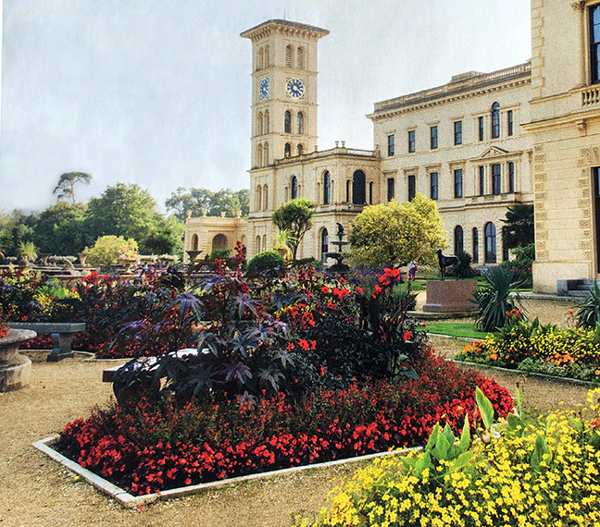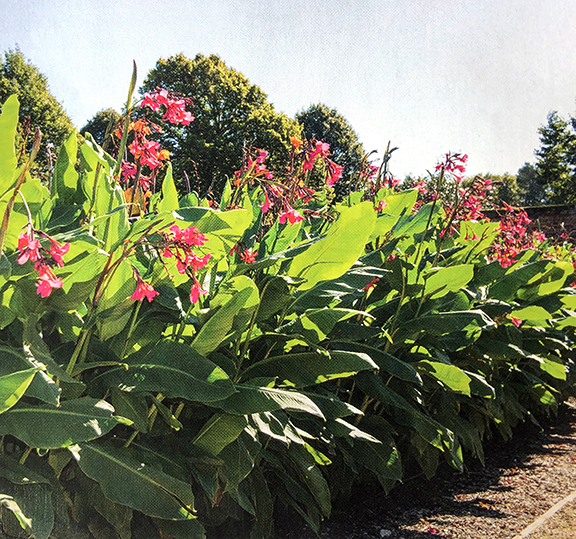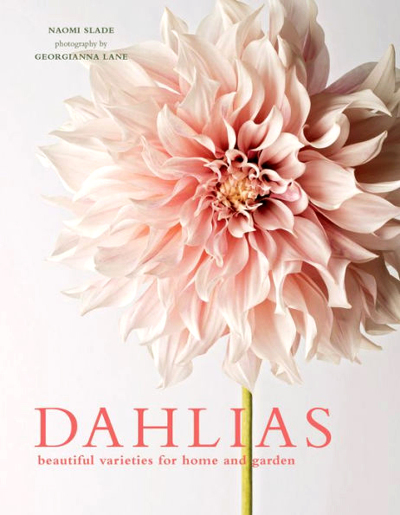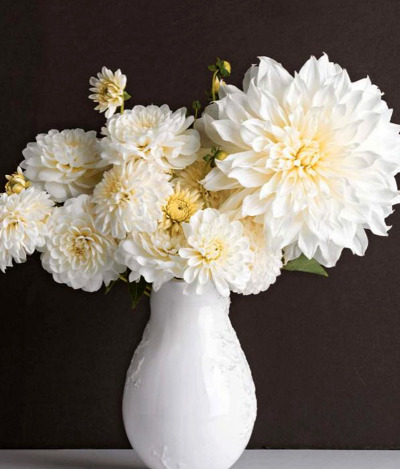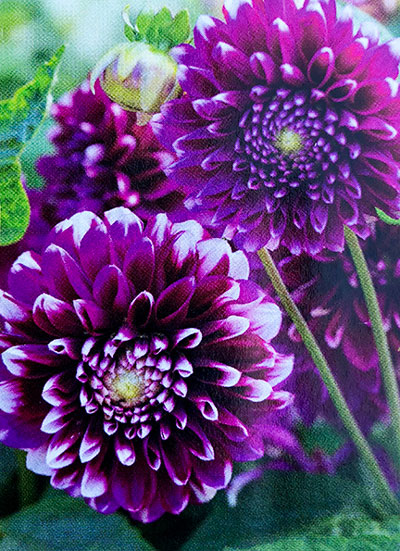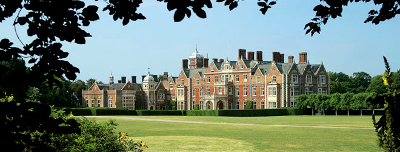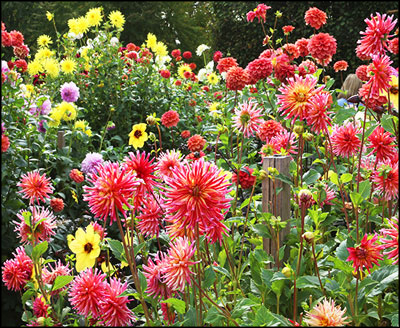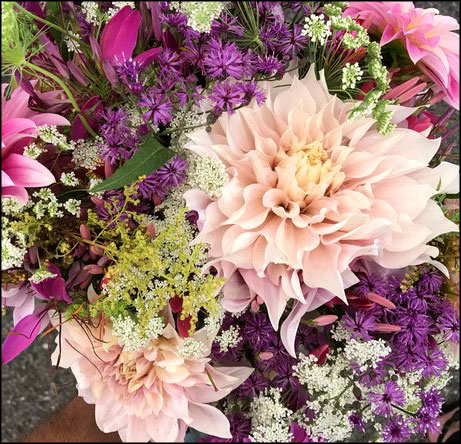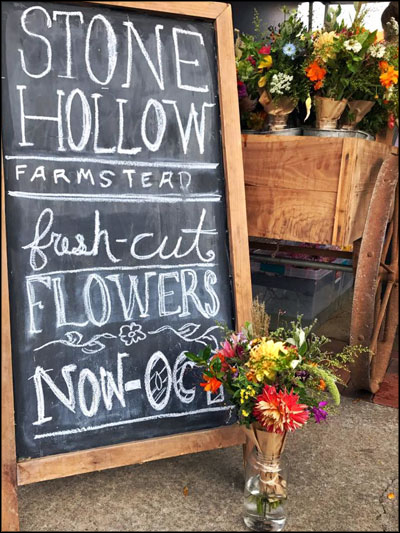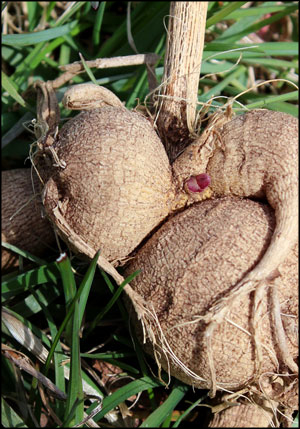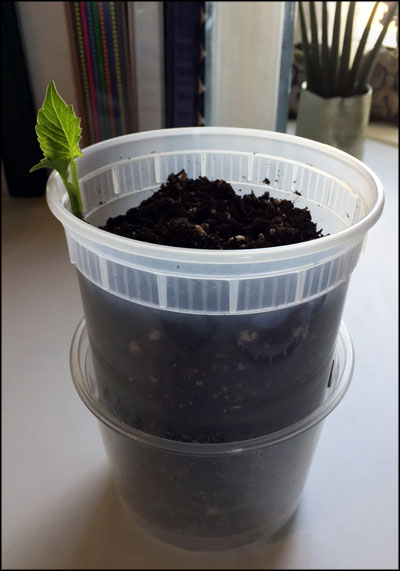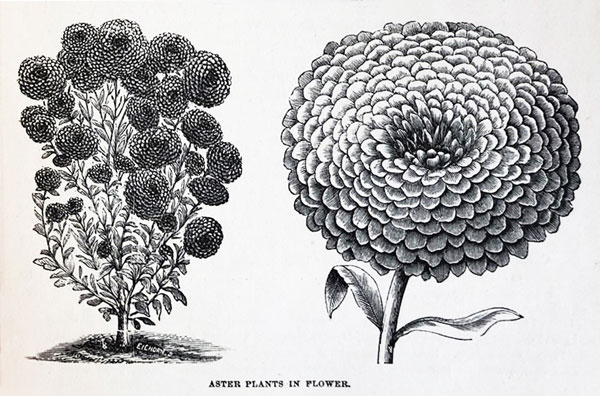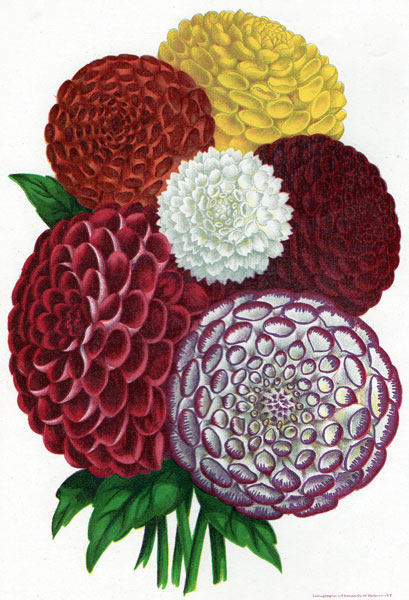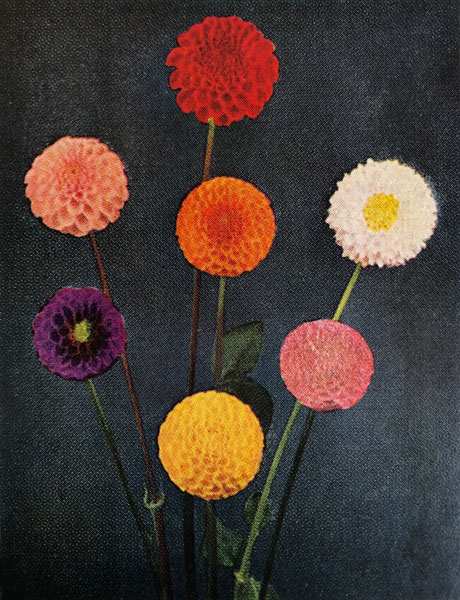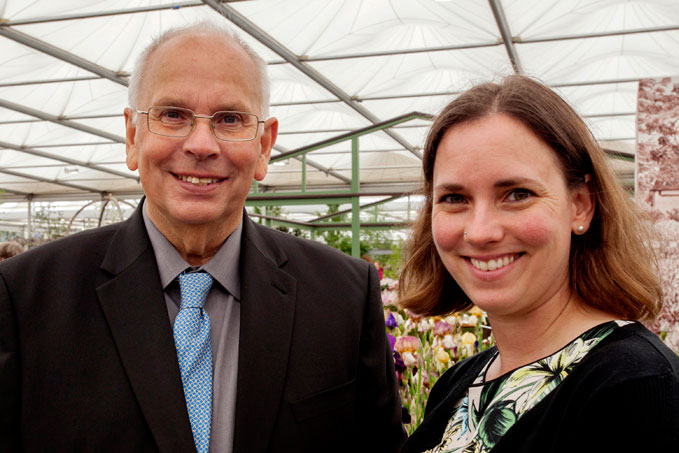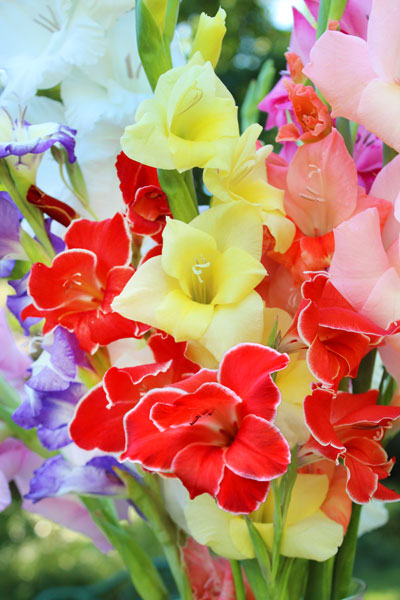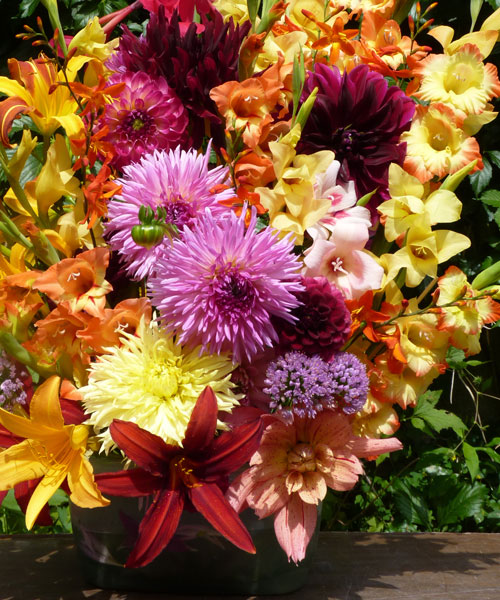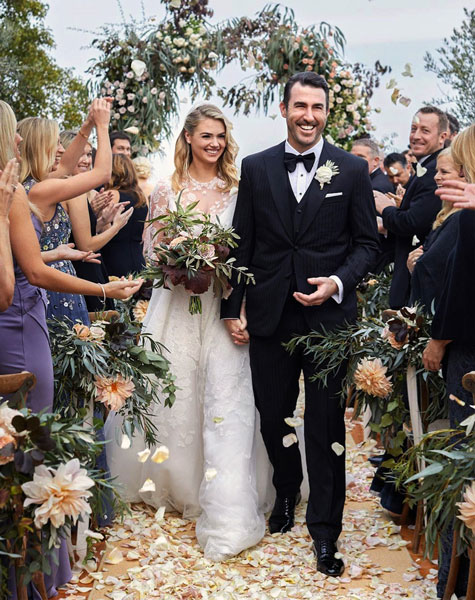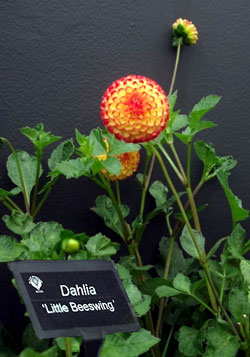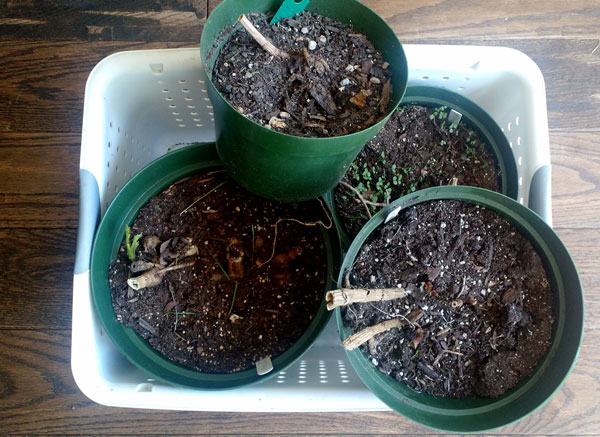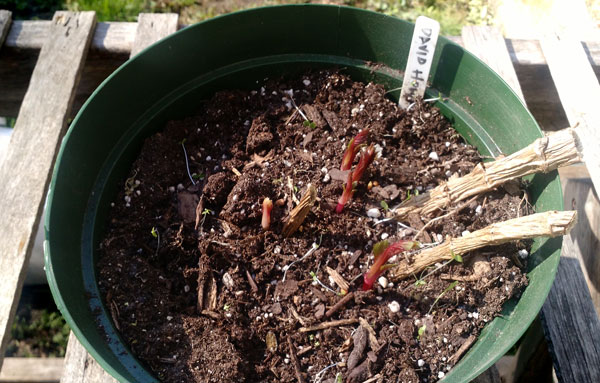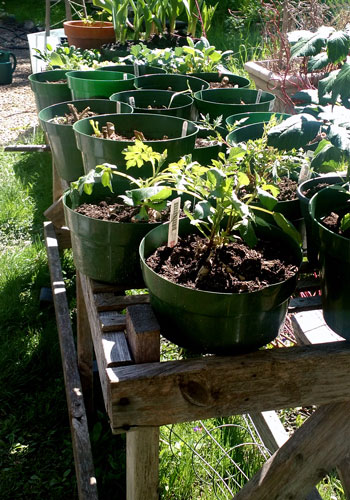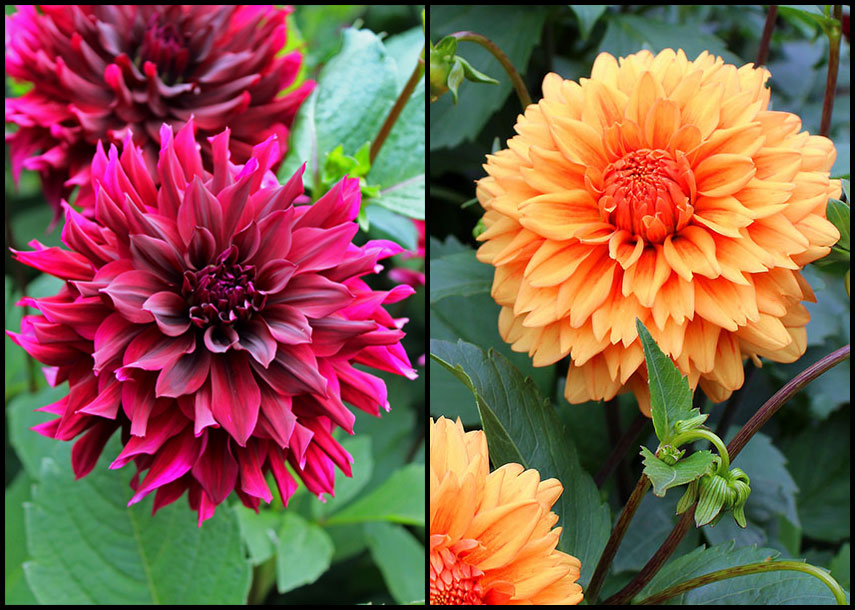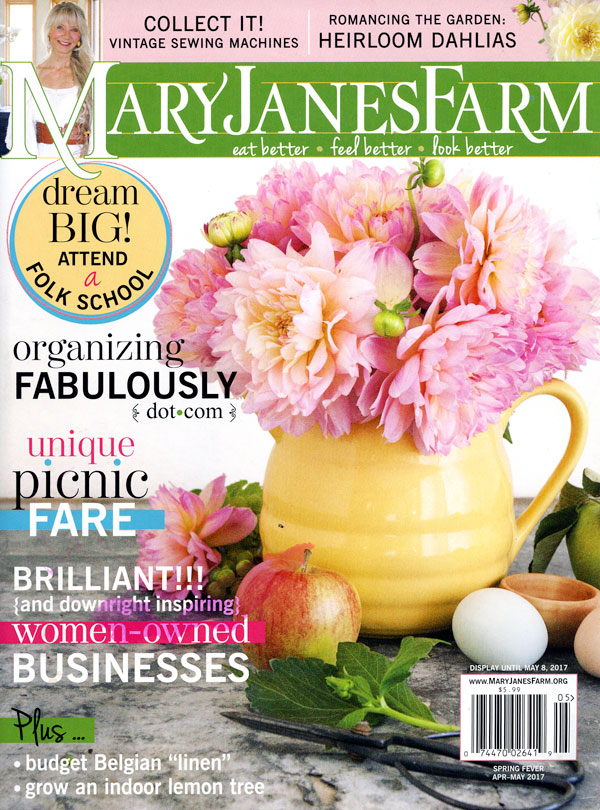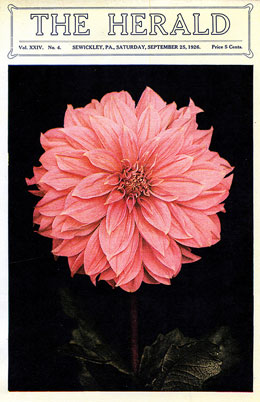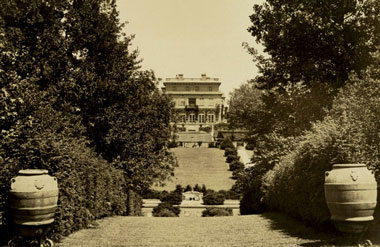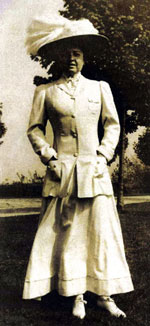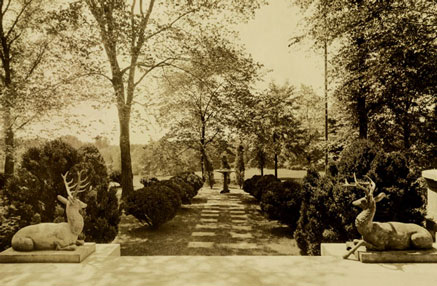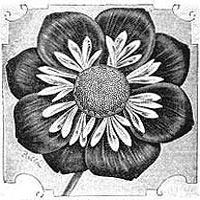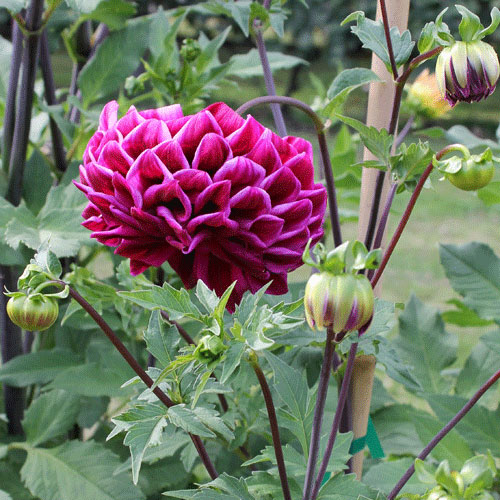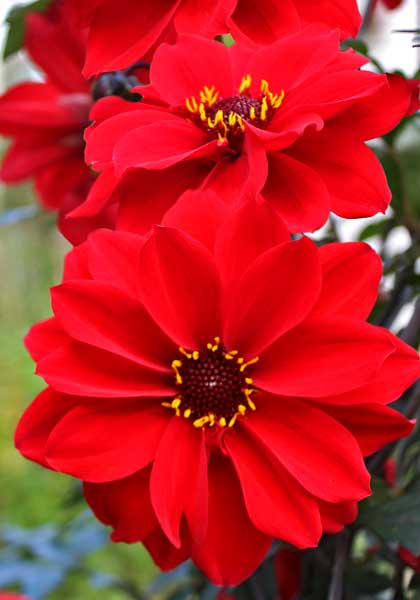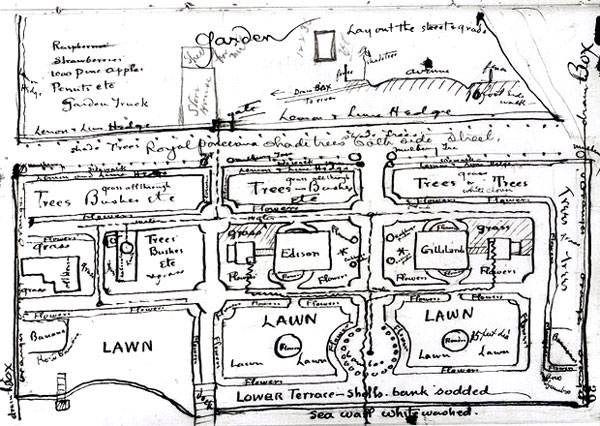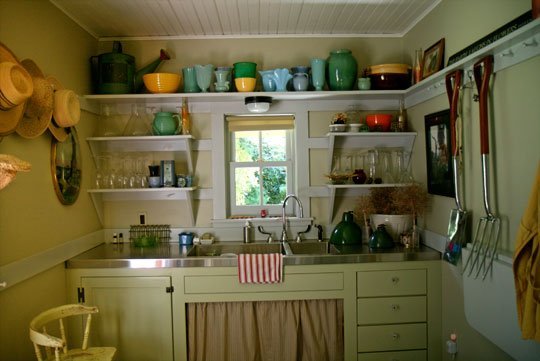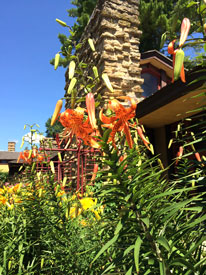(Here’s a fascinating story by our good customer Letitia Savage. Thank you, Letty, for sharing it with us!)
By the 1920s Pittsburgh’s industrial millionaires had flocked to Sewickley, Pennsylvania, to summer in country houses along the bluffs of the Ohio River. While the estates had ranks of professional gardeners, the owners were often actively involved, particularly when it came to competitive gardening.
Mrs. B. F. Jones, Jr. was typical of these serious amateur gardeners. The wife of a steel industry magnate, she lived at Fairacres, a 100-room Louis XVI mansion surrounded by acres of gardens. There, with the help of her gardener R. M. Fletcher, she grew thousands of dahlias.
In Sewickley the gardening year culminated in September with the annual Dahlia Show. As the Sewickley Herald reported in 1926, “There is hardly another flower which makes such a glorious showing when exhibited in mass.... Those who have never seen a dahlia show have indeed a thrill yet to live for.”
The three-day event included almost 50 competitive classes for dahlias – including many for vases of 12 to 25 blooms of a variety. Photos of the show in the society pages of the Pittsburgh press are still breathtaking. Dahlias in vases tower over the heads of the small girls admiring them, and some arrangements are even taller than their mothers.
In 1926, the star of the show was ‘Jersey’s Beauty’. The Herald featured it in a full color photo on the front page of it’s September 25 edition and noted, “If you are familiar with dahlias, you will be interested in ‘Jersey Beauty,’ in some ways the finest dahlia developed in recent years.” Introduced just three years earlier, it originally sold for $25 a tuber – a trifle for Mrs. Jones but the equivalant, according to the ADS’s Martin Kral, of “fifty gallons of milk, or a man’s new suit, or one of those modern home appliances, a vacuum cleaner.”
Although it’s not 100% clear whether it was Mrs. Jones’s ‘Jersey’s Beauty’ that stole the show in 1926, local reports say the Herald’s cover-girl dahlia was raised at Fairacres, and an oil painting of that flower once hung in splendor there, perhaps alongside her Gilbert Stuart portrait of George Washington.
Twenty years after her death in 1941, Mrs. Jones’ opulent summer home was razed. Her painting of ‘Jersey’s Beauty’ survives, though, preserved by the Sewickley Valley Historical Society, along with a stack of small cards tied with a faded blue ribbon. Although they don’t include dates or variety names, each card documents one of the many flower-show awards that Mrs. Jones won, poignant souvenirs of her prize-winning roses, chrysanthemums, and, above all, her glorious dahlias.
(‘Jersey’s Beauty’ went on to become one of the most popular dahlias of the 20th century. Although it’s almost sold out, if you order it now you can enjoy it just as Mrs. Jones once did – and it won’t cost you anywhere near as much as a vacuum cleaner!)
